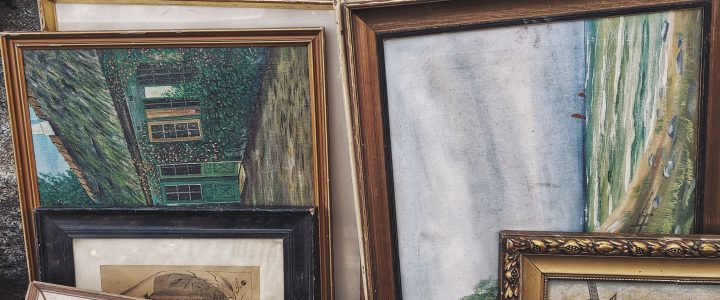Do Not Dare!
I saw it.
I framed it.
I captured it.
I made it.
Please do not remix my images – photographs or intaglio prints.
Whatever you do, do not steal them, please.
And do not even think about “borrowing” them.
Do not add them to your blogs or websites or presentations or…or…Just please do not.
That has been my sing-song for decades. And for decades I took pictures mostly for myself, occasionally to share with others, occasionally to reminisce.
This was pre-Instagram, and even pre-Facebook.
Nowadays, I share them on Instagram.
I even submit them occasionally to competitions for fun.
There have got to be rules for this!
And then it happened. An old colleague sent me a direct message on Instagram sharing how they appreciated my winter pictures some much that my images often become the wallpaper for their phone.
A feeling of flattery washed over me. But then I gasped! That should not be happening, should it? I mean, who else is doing the same? Aren’t there rules for this? I mean adding a name or logo to my images is quite time-consuming and reduces my spontaneity; wouldn’t you agree?
Then a memory floated by. This topic was raised by teachers in my research study as they discussed having students create in virtual and/or augmented reality.
I remember one particular story of a teacher recounting a student creating a “book report” in virtual reality using CoSpaces Edu. This student was creating a gallery space with sounds, images, and words. As the teacher checked the progress of the project, the student proudly shared that they had pulled music from a well-known artist on YouTube. The student proudly shared that the song selected had a theme that aligned with the content of their report.
There, during the interview, the teacher shared with me the gasp they had made in that moment. They continued to share how confused the student was – “but we do this all the time,” the student said.
So, what gives?
What are the rules that protect creative work in cyberspace?
We know there are many protections for music (well depends on what country you are in but protections for musicians are getting better globally). Does the “thou shall not plagiarize” rule apply to images, even those created by amateurs? How many times have we pulled images from the web to include in a presentation?
There is the infamous Shutterstock website and many others like it but the thought of paying for an image just seems over the top, no? And who determines the pricing anyway? And with many worldwide wielding smartphones which get clogged with photos galore, why pay for this? I mean, as the economists say, when supply is high, pricing drops, so what gives?
Yes, I know. I am being very contradictory. I want free images when I want them but I want nothing to do with those who want to use mine.
Well There are Rules; Quite Simple Actually
Now, I have to say that after reviewing the plethora of resources provided in this week’s course materials, I was pleasantly surprised that there are numerous options for free very high-quality audio-visuals to be used but there is a caveat to all this – you must follow the rules.
The Creative Commons rules, that is.
Creative Commons is an organization that has enabled a peaceful structured path amid the copyright and licensing legalities that allows creatives to share their work with the world with certain guidelines. Many organizations have already jumped on board.
Want to inspire others by sharing your digital creations? Simply find one of the six Creative Commons licenses that work for you and automatically attached it to your work wherever you share. If you do not want someone to alter your work, just select the license that allows for that.
If you want someone to remix your work but not make money off that creation, you can say so too. You set the conditions. Whatever you want, it’s ok; you will be fine. Wherever your work goes, the user must make sure they attribute the work to you!
Now we know that many educators create and share a lot of digital content for the world to see. From Teachers Pay Teachers to the now ubiquitous Khan Academy where, one video at a time, Salman Khan was able to reinvent teaching and learning; educators rely on videos.
But how easy is it to add a Creative Commons License to one’s work? There is a handy tool that allows you to make a choice on which license best suits your work but then what? How do you actually attach it to your digital creation? I became curious and so I tried.

I decided that the screencast video I created for the video project assignment this week might as well have a Creative Commons license; why not! Guided by this page on the Creative Commons website, I selected a license type: Attribution-NonCommercial-ShareAlike 4.0 International.
Then after watching a short video on how to attach Creative Commons licenses to YouTube videos, I did it! It literally took three clicks in the YouTube Studio. That’s it?
Maybe it is time I change my mind.
Maybe it is time I add a teeny tiny bit more to openness and creativity in digital space.
Maybe it is time to show my appreciation for those who have inspired me in cyberspace by joining the pack.
We shall see!

